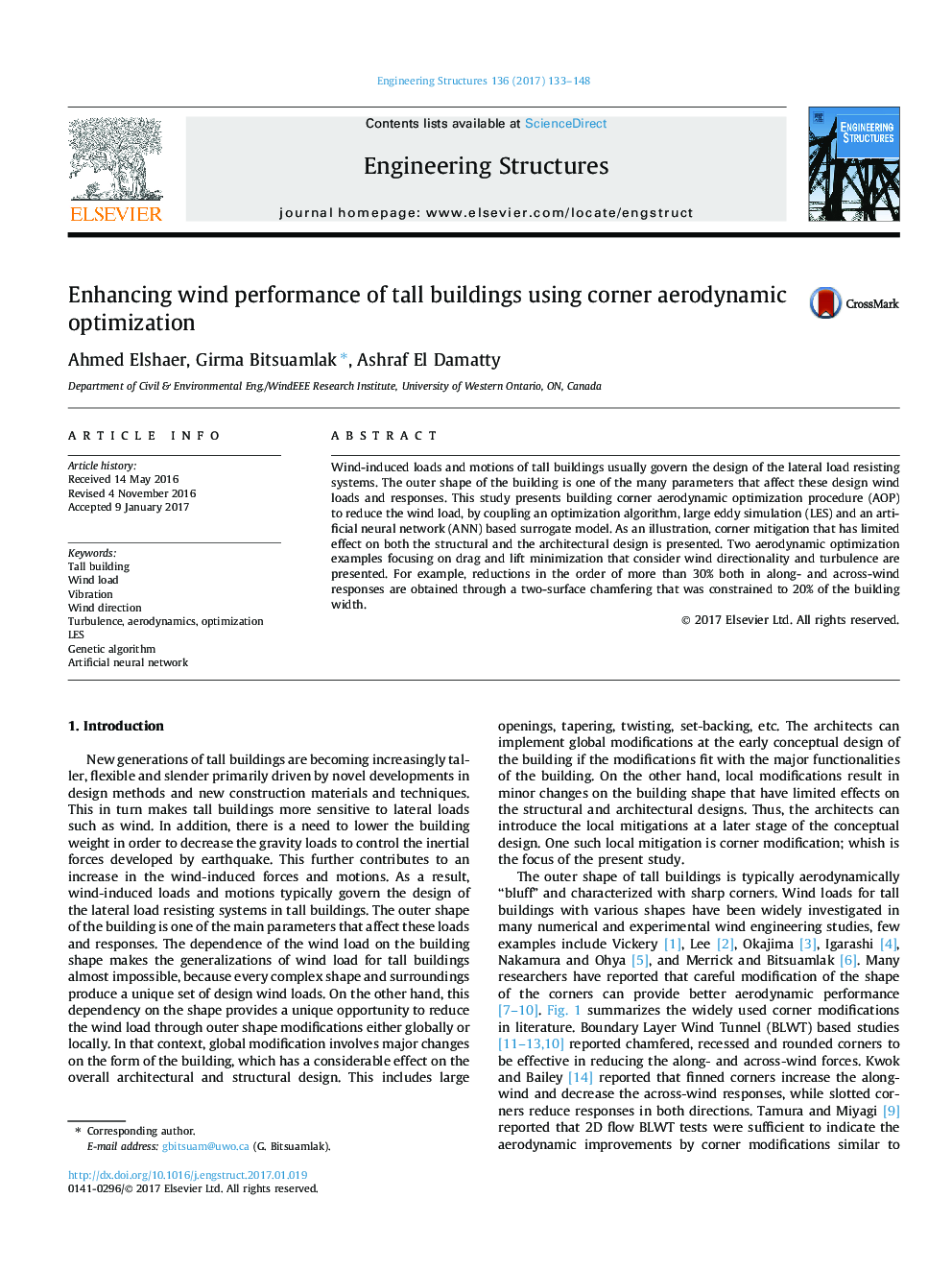| Article ID | Journal | Published Year | Pages | File Type |
|---|---|---|---|---|
| 4920490 | Engineering Structures | 2017 | 16 Pages |
Abstract
Wind-induced loads and motions of tall buildings usually govern the design of the lateral load resisting systems. The outer shape of the building is one of the many parameters that affect these design wind loads and responses. This study presents building corner aerodynamic optimization procedure (AOP) to reduce the wind load, by coupling an optimization algorithm, large eddy simulation (LES) and an artificial neural network (ANN) based surrogate model. As an illustration, corner mitigation that has limited effect on both the structural and the architectural design is presented. Two aerodynamic optimization examples focusing on drag and lift minimization that consider wind directionality and turbulence are presented. For example, reductions in the order of more than 30% both in along- and across-wind responses are obtained through a two-surface chamfering that was constrained to 20% of the building width.
Related Topics
Physical Sciences and Engineering
Earth and Planetary Sciences
Geotechnical Engineering and Engineering Geology
Authors
Ahmed Elshaer, Girma Bitsuamlak, Ashraf El Damatty,
